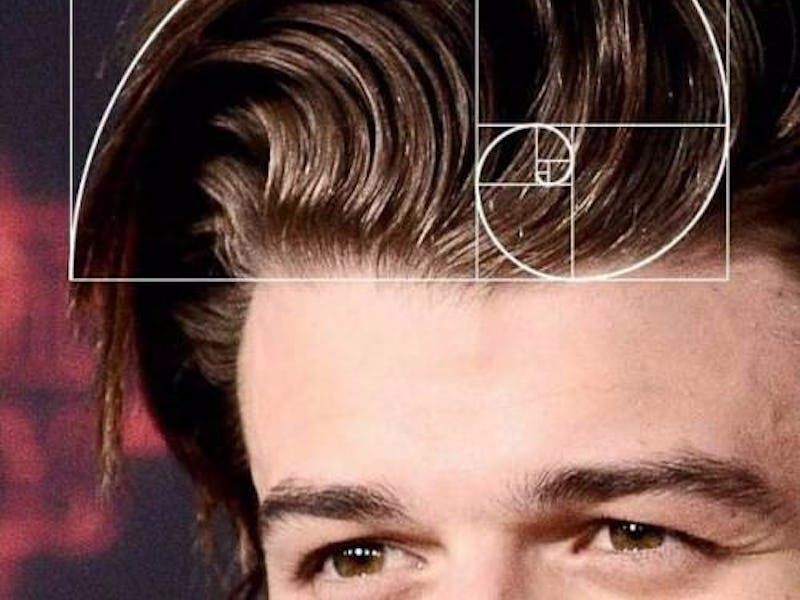There’s a lot that can’t be explained in the world of Stranger Things, and for a long time, Steve Harrington’s preternaturally perfect coif was near the top of the list. But even after he explained in season 2 that he owes it all to “Farrah Fawcett” hairspray, many remained incredulous. Somehow, his voluminous swoop, sleek but never slick, holds its rip-curl wave throughout even the fiercest of Upside-Down battles, maintaining a level of perfection that suggests greater forces are at play.
A recent meme supports the coif’s relationship with a higher power. In an image that’s been making the rounds on the meme internet, a photo of Steve’s — actually, Joe Keery’s — gravity-defying half-pompadour is superimposed with the outline of the Fibonacci spiral, a never-ending swirl that grows consistently and indefinitely. Its shape, like the enduring perfection of Steve’s hair, never deviates because it grows according to a strictly defined set of numerical rules that many processes in the natural world appear to follow.
Here it is on top of Steve’s hair:
More like "Fibonacci Fawcett' spray.
And here it is, growing indefinitely.
Also a close approximation for how it feels to gaze at Steve for nine episodes straight.
The Fibonacci spiral pops up in many objects in the natural world: the swirls of Romanesco broccoli, the growth patterns of sunflower seeds, and even in the whirl of a hurricane as seen from space. As such, mathematicians and philosophers alike have argued that the spiral is a fundamental part of nature that follows rules laid out in the fabric of our universe.
In a previous article about the Fibonacci spiral fitting perfectly on Jon Snow’s bare ass in Game of Thrones, Inverse explained the math behind it:
Mathematically speaking, the spiral grows according to φ (PHI), a number popularly known as the golden ratio. This means that the spiral grows away from its center by a factor of φ every quarter turn. The golden ratio, in turn, is what happens when two numbers have a ratio that’s equal to the ratio of their sum to the larger number.
The golden ratio governs the growth of the Fibonacci spiral.
The best argument scientists have for the ubiquity of the spiral in nature is that it presents the most maximally efficient way to arrange things, and evolution is all about maximizing efficiency. The Fibonacci arrangement of leaves around a stem, for example, is thought to leave just enough space between leaves so that each receives the maximum amount of sunlight, leading to the overall growth of the plant. We don’t know exactly what the arrangement of Steve’s hair maximizes — the surface area of his also-perfect face visible to human eyes, perhaps — but we do know that the overall effect is aesthetic perfection.
Because humans have observed the Fibonacci spiral in beautiful things in the natural world for millennia, we seem to associate it with beauty. Blossoming roses, compact pine cones, and delicate starfish all showcase this paradigm of perfection. Now, thanks to the internet, we can add Steve Harrington’s impossible hair to this list of Nature’s archetypes.
